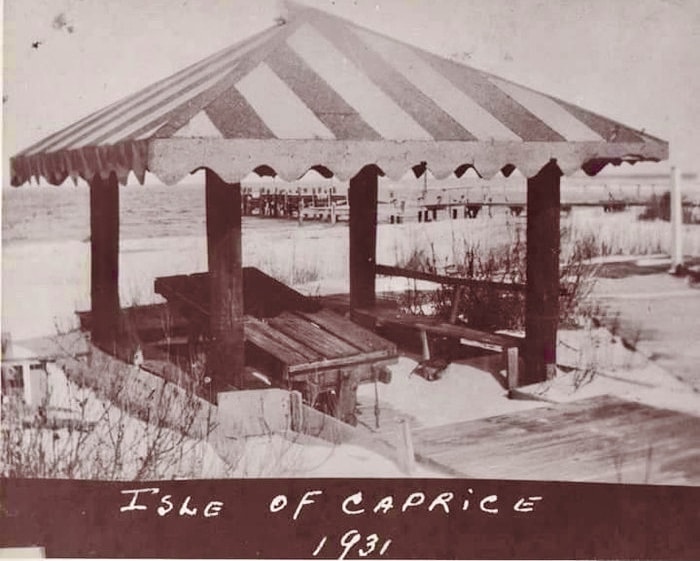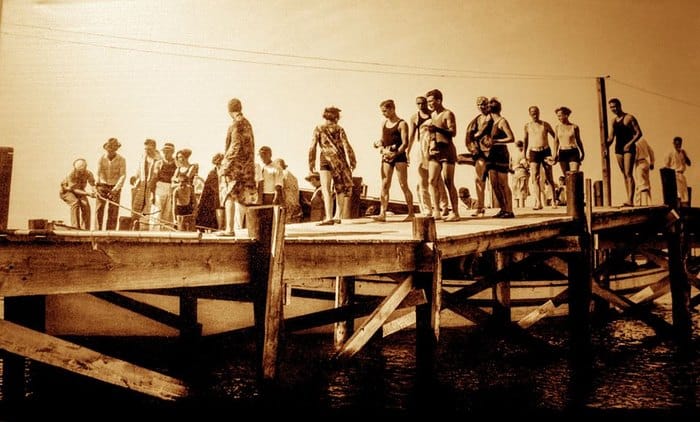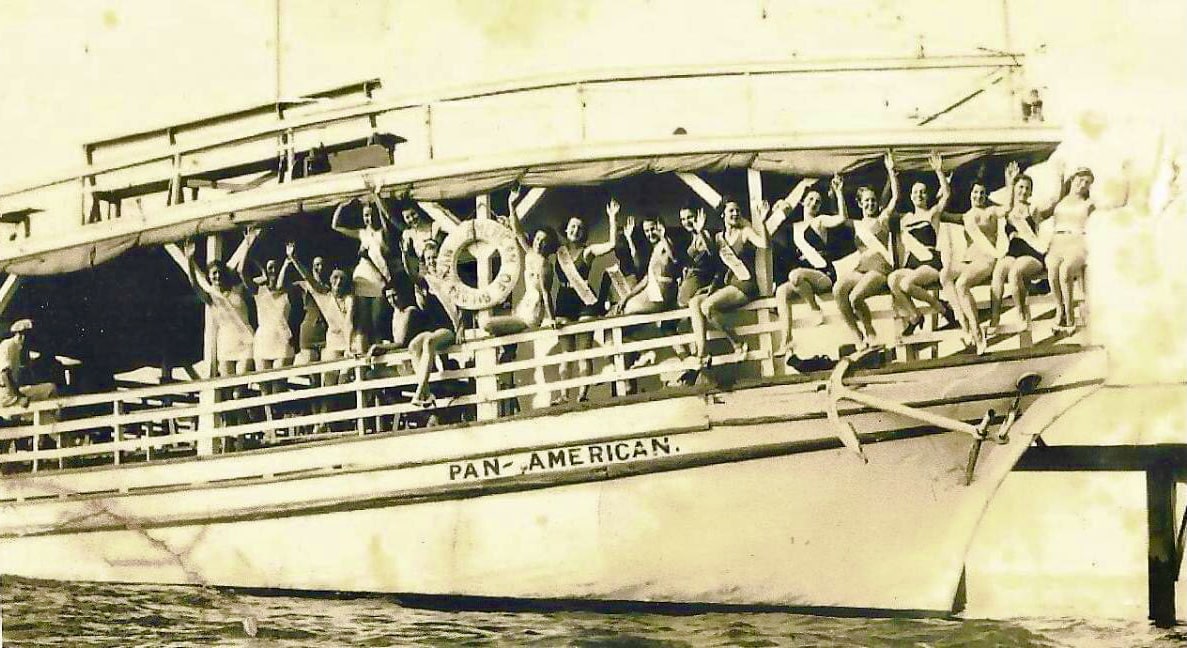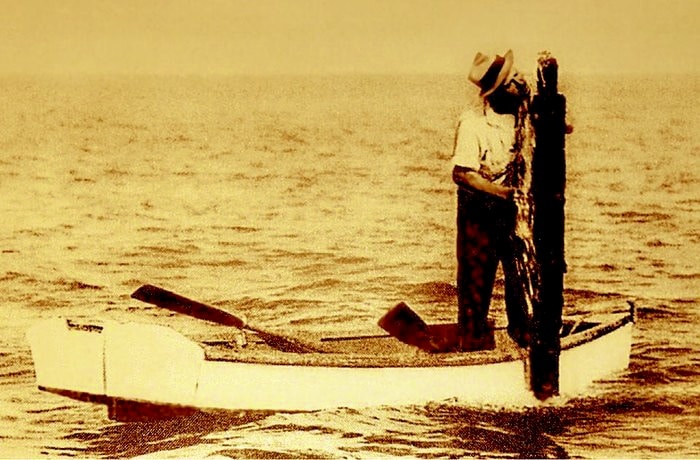Could the fabled and fickle Isle of Caprice, also known as the Monte Carlo of the South, be ready to rise and bring back the glamorous days of the Roaring Twenties?
The lost barrier island between Horn and Ship islands about 12 miles south of Biloxi currently remains about four feet submerged in the Gulf of Mexico, but for centuries, the island has played hide and seek by disappearing and then returning when no one is watching. Experts speculate it resurfaces about every 100 years — give or take — depending on annual weather impacts. The last time it vanished was in the early 1930s, and it took a casino resort down to the depths with it.
The unpredictable island was first documented in August 1847 as an official military reservation and was noted to have faded in 1859, according to historical records. The phantom island reportedly resurfaced in the 1890s but remained vacant until the early 1920s when Col. Jack Apperson, builder of Biloxi’s Buena Vista Hotel, Walter “Skeet” Hunt, and Arbeau Caillavet, both noted Biloxi entrepreneurs, bought the stretch of land from the U.S. District Attorney in Jackson County for $1.25 per acre, a total of $183.75. The trio turned the water-surrounded land into a private island vacation destination.
It was the Roaring Twenties, a glamorous decade in music and fashion, and the three-mile-long and a-quarter-mile-wide island was overflowing with both.
The trio named it Caprice, built a pier, sank a freshwater artesian well, and added cabanas, a dance hall, and rooms for gambling. Island-goers sunk their feet in soft, thick carpets that screamed luxury and rested on grandiloquent divans that were all along the walls. At the time, Biloxi and New Orleans newspapers reported, there were elegant tapestries hung near deep-cushioned, mahogany-colored, cane-bottom gambling stools. A faro layout highlighted a roulette table, two craps tables, and a giant bird cage that made the place spin with excitement.
The grand opening was July 5, 1925, and it was billed as the place to be for the summer. Bring your bathing suit and your wallet was the island chant. Because of Prohibition, liquor wasn’t sold on the island, but island-goers knew smuggling in their own would not be a problem.
Several ferries, including the Non Pareil and Pan American, ran daily with 90-minute excursions from the mainland to the island. They picked up passengers at old Balter’s Pier and hotels along the Biloxi coastline. A round-trip ticket — which included a shrimp or oyster po-boy with fries and a crisp, ice-cold, Barq’s Root Beer — was $1 for each passenger. Flyers flung all over the Gulf Coast advertised “competent crews, with special attention to ladies and children.” The leaflets also described good music on board and prompted island-goers to see the captain for special arrangements or parties.
It was a colorful and carefree period in history with lots of island gambling, dancing, drinking and eating, sunbathing, and swimming marathons. As word spread about the celestial island, profits grew and soon renovations gave the island the look and feel of an ancient Roman city with giant columns and three lifelike ceramic tigers. It attracted visitors from all over the nation and the island soon earned the nickname the Monte Carlo of the South.
The resort’s success was short-lived though, and its demise began in 1929 when the Great Depression commandeered American cashflows and the vacation destination had nowhere to go but down. Shortly after the decline, a hurricane headed straight to the island. Despite the impending storm, many island-goers stayed on the Isle of Caprice instead of heading back to the mainlands of Biloxi, Gulfport, or Ocean Springs.
Days later, rescuers from Biloxi went out to the island to save survivors and only found bodies and debris floating in the water. The island had been split in half with two separate strips of land remaining. The majority of the resort — tigers and all — was at the bottom of the Gulf in a watery grave.
Historians believe people flocked to what remained of the island for souvenirs, including the naturally growing lavender sea oat plumes. Experts speculate the island was picked clean which left nothing for the sand to cling to and therefore it slid into the Gulf waters. Sadly, the glamorous Isle of Caprice disappeared again in the early part of 1931 after living all of its fabulous glory as an exclusive resort island paradise. Only a pipe from the artesian well remained above the ripples and passing boaters filled jugs with fresh water until a boat reportedly hit it and the pipe slipped under the waves—forever lost.
The reality is strong currents and a couple of powerful hurricanes are probably what washed the barrier island into the history books, but who really knows?
Heirs of the original owners have continued paying annual property tax of about $9 on the vanished island utopia in hopes the capricious sandbar will stop lurking and reclaim its place as the ecliptic island wonder of the Gulf Coast.
According to legend and local historians, if you venture out into the Gulf where the sunken island is hidden beneath the water’s surface, you can hear rowdy laughter, abruptly replaced with terrified screams, then total silence almost as if they are waiting to rise 100 years later and once again party in paradise—Isle of Caprice style.
All photos courtesy of the Mississippi Department of Archives and History








